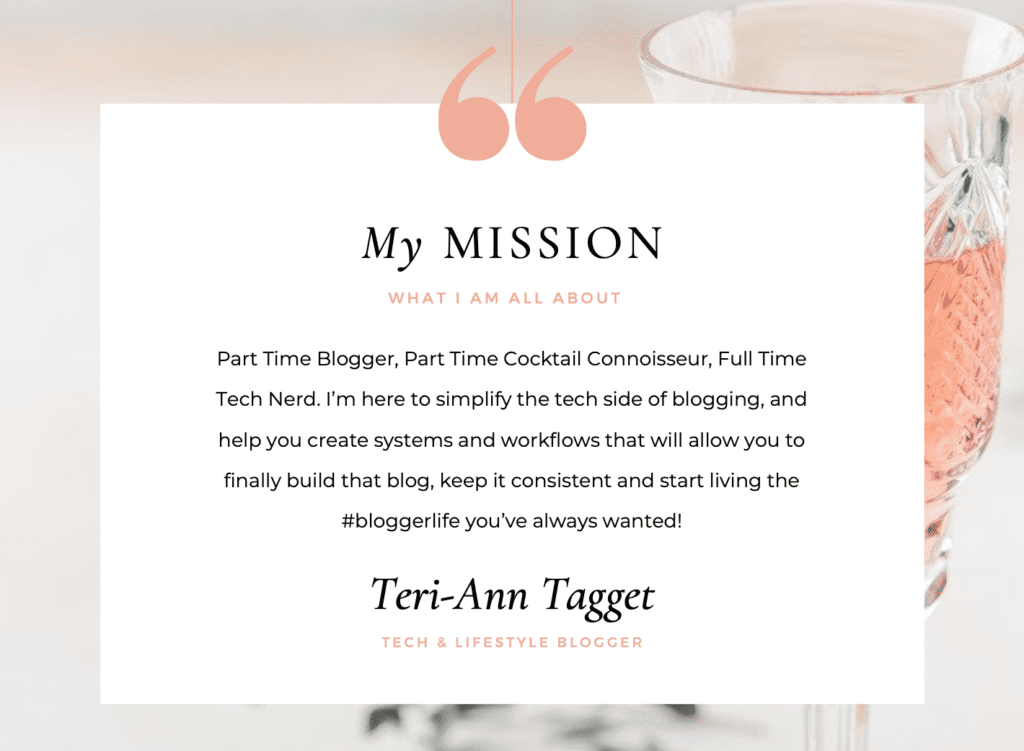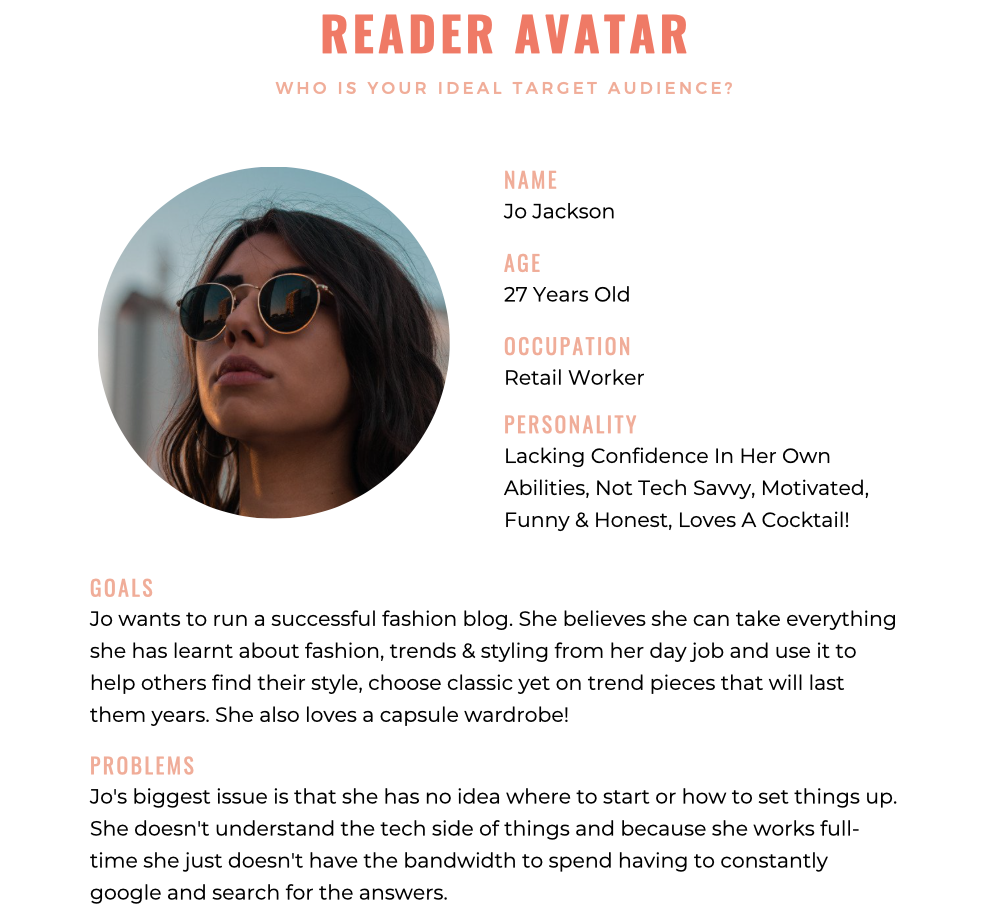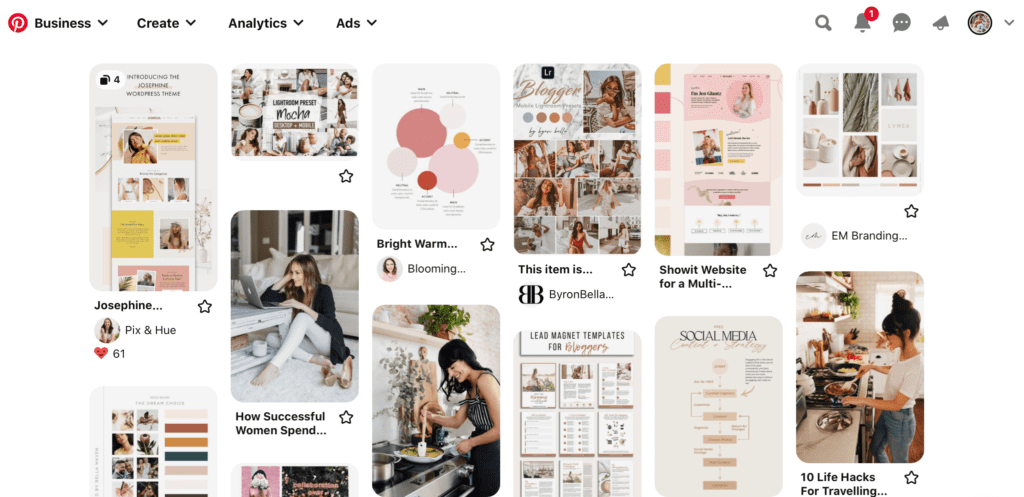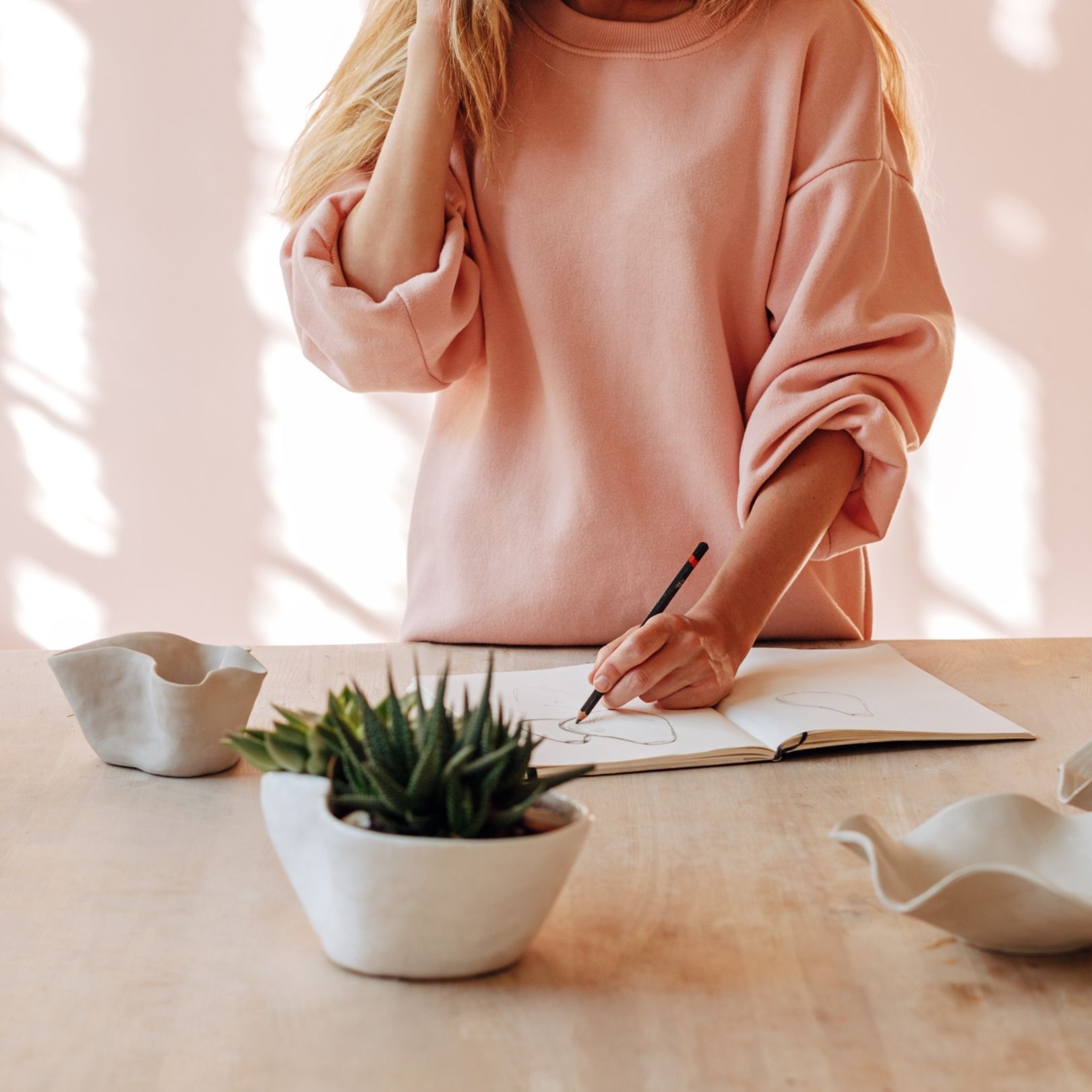Ugh, Brand Strategy! I feel like every entrepreneur ever has a love-hate relationship with their branding. I know I personally get the urge to ‘change it up’ at least every other month.
It took me a long time to realise that this feeling came from me and my personal opinion on my branding.
When in reality, your branding isn’t about you! It’s about your ideal client, reader avatar, target audience or whatever you’d prefer to call it.
So how do you create a brand that captivates your target audience without letting your own personal thoughts and feelings about it get in the way?
You. Do. The. Damn. Research!
I know, I know! I can already hear the ‘uuuuuuggh’s’ from here!
It’s hard work and isn’t anywhere near as glamorous as playing with colour palettes or building your inspiration board on Pinterest but to be real with you, it’s got to be done.
When I finally stepped back and said to myself, ‘alright woman, you can’t keep putting this sh*t off, you’ll never be the authentic successful brand that you want to be if you don’t. So you’ve just got to do the work’, then actually did it, everything changed!
I knew who I was talking to, I knew what she was looking for and what she needed from me. This meant that I was able to build a brand that I was not only happy with but I knew that she, my reader avatar, would feel connected and attracted to.
Alright, I’ll get off my soapbox now because I feel like you get what I’m getting at, so let’s dive into the process of Creating A Brand Strategy For Your Blog.
What Is A Brand Strategy?
The Brand Strategy is where you dig deep into the Why and the Vision behind your brand, as well as get super clear on your target audience and who it is that you are speaking to through your branding.
I’m all about transparency so I’ll be using my own brand strategy and style guide as an example throughout this series so you can get a clear idea and a real-world example of what I’m teaching you.
Brand Mission Statement
The new and improved ‘elevator pitch’. You want to tell people in as simple a way as possible, who you are, who you help and how you do it.
Now I’m not going to lie, it took me a hot minute to nail down my mission statement. I knew who I wanted to help, I knew how I wanted to help them & I also knew that I wanted it to be a little punchy and funny to really showcase my brand personality (which we’ll get to later).
In all honesty, I spent an entire weekend just trying to get this right, so don’t be hard on yourself and expect it to come to you right away.
Just let the ideas flow, write it down, say it out loud, and keep tweaking until you find the one that feels right.

I want to break this down a little so you can understand why this fits with my brand persona and target audience.
Part-Time Blogger – A quirky statement that tells you in the shortest way possible that I only blog part-time as I still work a full-time job, this helps me be relatable to a majority of my target audience.
Cocktail Connoisseur – A connection statement that gives a hint of who I am or what I enjoy outside of my brand, plus I always wanted to include some lifestyle aspects to my brand, and I am partial to a good Margarita!
Tech Nerd – Establishing my area of expertise.
I’m here to simplify the tech side of blogging, and help you create systems and workflows – This is how I’m going to help my target audience
Finally build that blog, keep it consistent – Hitting my target audience right in their pain point. Letting them know I see them, I see their struggles and I understand.
Start living the #bloggerlife you’ve always wanted – This is the outcome or what they can achieve by reading my blog, watching my videos, buying my products etc.
Also utilising the hashtag #bloggerlife again showcases who I’m talking to, young millennial women who spend their time looking at other bloggers online, wishing they could make it happen for them.
If all of that seems a little overwhelming, you can stick with the tried and true fill-in-the-blanks method:
My brand does __________ to help ___________ do ____________.
Example: Teri-Ann Tagget is a tech expert and educator helping female entrepreneurs gain the technical know-how to build and grow their blogs.
But always try to give it some personality that aligns with your brand. Make it memorable!
Reader Avatar
This was another one of those brand strategy things I put off doing for such a long time, but this one kind of goes along with the saying ‘When you speak to everyone, you speak to no one’.
Would you speak to your best friend the same way that you speak to your boss? How about your grandma? I’m gonna say, probably not!
By figuring out who your target audience is, and then putting an actual person behind it, you create someone who you can talk to and connect with on a much deeper level.
You want to create that feeling of ‘damn that’s exactly how I’m feeling’, or ‘this chick totally gets me’ and you can’t achieve that without first narrowing down who it is you’re talking to.
Back at it with the examples, everyone, meet Jo!

Jo is a 27-year-old retail worker who lacks confidence In her own abilities and isn’t really tech-savvy, but she is motivated AF, funny, honest, and loves a cocktail!
Jo wants to run a successful fashion blog. She believes she can take everything she has learnt about fashion, trends & styling from her day job and use it to help others find their style, and choose classic yet on-trend pieces that will last them years. She also loves a good capsule collection.
However, Jo’s biggest issue is that she has no idea where to start or how to set things up. She doesn’t understand the tech side of things and because she works full-time she just doesn’t have the bandwidth to spend having to constantly google and search for the answers.
Young Millennial Female – ✅
Wanting To Start A Blog – ✅
Struggles With Tech & Where To Start – ✅
Complimentary personality & loves a cocktail – ✅
Now I know exactly who I’m talking to, I know her pain points – I get her!
If you really want bonus points, head to a free stock photo website and find a photo of someone who you feel matches your reader avatar. Having a face to a personality makes it even easier to visualise them as a real person.
Once you’ve nailed this, before starting any blog, video, newsletter, social media captions etc. make sure you are sharing it in a way that speaks directly to your reader avatar.
Brand Values
Here is where you are going to really solidify your why and the principles on which your brand is based. There are 4 questions you need to answer.
What is your why?
Be honest here, if your why includes wanting to make money – that is totally acceptable because at the end of the day, you need to be able to monetise your value so that you can keep providing it!
Example: I want to make money doing something I love. I love learning about all things tech, strategies and design, and I love teaching what I learn to others so they can succeed at what they love.
What is your vision for the brand?
This isn’t a set-in-stone path to success, this is just a simple sentence on how you would define success within your brand.
Example: My vision is to build a profitable blog through digital products and affiliate marketing that will allow me to quit my 9-5 job and pursue blogging full-time. I also want to help as many people as I can do the same.
What is your brand mission?
Similar to your mission statement but more focused specifically on who you want to help and what you want to accomplish.
Example: I want to help new bloggers feel confident in launching their own blogs by demystifying the tech side of blogging and showing them that it is possible, without spending major money on courses and expensive software.
What are your brand values?
Ask yourself, what are the core values of your brand? What will you stand for? For a list of Core Values you can use as a guideline simply search ‘Brand Core Values’ on Google or Pinterest.
Example:
Authenticity – Be a source of authenticity throughout my own blog journey.
Simplicity – Simplify everything.
Empathy – Offer empathy and support to those who are eager to learn.
Bravery – I want people to know that it’s ok to be scared, and to feel awkward, as long as they try anyway.
How to Create Your Brand Direction
We’re almost at the fun stuff, I promise! Here we are covering the strategy behind the visuals of your brand.
I’ve included a few links within this section that I think would be super helpful and do a great job at explaining the psychology and meaning behind colours and fonts.
Brand Persona
This is made up of 3 Core Elements; Your Brand Voice, Primary Colour and font Styles. We aren’t choosing our palettes or specific fonts just yet. We are just focusing on selecting an overarching theme that best fits with the characteristics we’ve already identified for our brand.
Brand Voice
What will your tone of voice be when communicating with your target audience? How do you want to come across? Serious, funny, relatable etc.
My brand has a primary archetype of The Sage, meaning analytical, clever & confident, with a secondary archetype of The Performer which emphasizes the funny, witty, enthusiastic personality I try my best to portray.
If you look back at my brand’s core values (Authenticity, Simplicity, Empathy & Bravery), as well as that quirky, light-hearted persona I’m intertwining through my mission statement you’ll see how well these archetypes work for my brand.
Are you starting to see how every part of your brand is connected and comes together to create a cohesive message and visual identity?
I found this blog post on Brand Archetypes by Simply Sianne extremely helpful when completing this part of the branding process.
Primary Colour
The psychology behind colour theory is a super interesting yet intense topic to dive into. However, having a basic understanding of the meaning and emotions each colour represents will help you in choosing a colour palette that best aligns with your brand.
So as an example, my brand’s primary colour is Orange which predominantly represents Courage, Confidence, Friendliness, Success, Energy and warmth. If you look back at my brand values and voice, this is in pretty good alignment.
This blog post by Emmygination (Love her!) on How To Create A Colour Palette gives a great overview of the basics of choosing colours that fit your brand.
Font Styles
The same as with colour theory, each font style has its own characteristics which bring about different emotions.
My brand consists of San Serif as my primary font which has an emotional representation of clean, informal, simple, objective and authoritative. My secondary font is Script which represents the creative, feminine aspects of my target audience as well as the warm, welcoming and unique persona I wish to present with my brand.
Saffron Avenue has an awesome blog series on How To Choose Fonts That Reflect Your Brand Style. This is a really in-depth post with great examples.
Brand Inspiration Board
Now we’ve done the work and figured out exactly what our brand is all about, who we are talking to and how we want it to be portrayed.
With everything that you’ve learned about your brand so far, you now want to curate a visual representation of this brand.
My favourite way to do this is by creating a Pinterest board with different photos, colour palettes, textures etc. that best represent your brand.
It will also help give you a better idea of the photography style that best suits future photoshoots, website and social media imagery.

Conclusion
We made it! We’ve done the hard yards, dug deep into our brand strategy, and built out an identity that truly aligns with your goals and mission. We know who we are helping and how.
In the second and final post of this mini-series we’ll dive into the more glamorous side of branding by Creating A Brand Style Guide, we’ll cover everything from designing logos to creating colour palettes and choosing our fonts.
We’ll do all of this using the brand strategy that we’ve carved out today. However, if you want to get started right now, I’ve actually created a style guide template for you to download and fill in with all your brand details.
It’s a Canva template that you can copy straight into your own account and get right to the fun part of putting it all together.
You can get your hands on the template for FREE, just fill in your details below and you’ll receive an email with a PDF that gives you the template link along with instructions on how to add it to your own canva account.
Creating an aligned and cohesive brand doesn’t need to be complicated or stressful. I hope this mini-series helps you create the brand you’ve always wanted and puts you one step closer to achieving your blogging goals.
If you do use my posts and style guide template to create your brand, feel free to tag me on social media or send me an email because I would absolutely love to see it!
Disclaimer: I sometimes include affiliate links within my posts for my fave products. If you click and purchase, I may receive a small commission at no extra cost to you.

Hi Terri,
Just dropping you a line to say THANK YOU for your awesome tips on creating a brand style! I am working on creating an Etsy shop selling digital designs for wall art and T-shirts, and stumbled across your blog somehow, and have found it really helpful. It’s clear, concise, and has great links to help with a couple of the more tricky parts. So, a big thank you, and super happy to see a fellow Aussie online for a change!
Cheers,
Leah 🙂
Thank you for your lovely comment, I’m so glad you’ve found my blog helpful 🥰 & LOVE that you’re an Aussie also! It’s always great bumping into each other across the World Wide Web. Wishing you all the luck with the launch of your Etsy store Xx